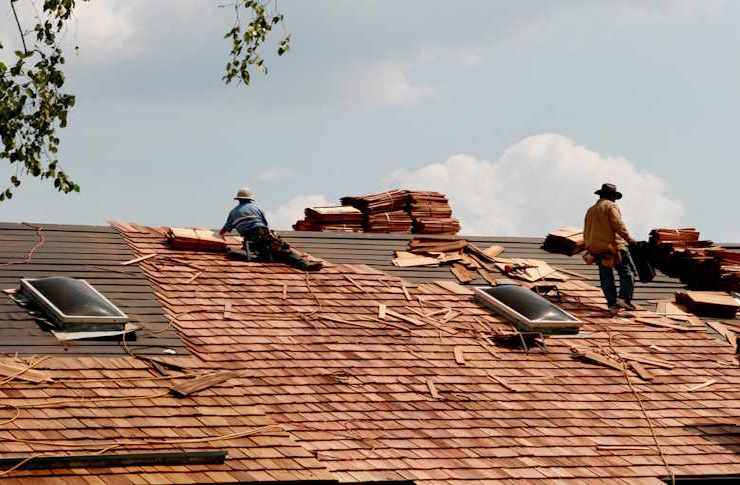Find out what Roofing Services will cost you in 2025
Thinking about replacing your roof or repairing it in 2025? Discover the expected costs for roofing services next year and learn what factors will influence your final bill. Stay informed and plan ahead with confidence before you commit to any roofing project.

The roofing industry continues to evolve with changing materials, technologies, and market conditions. As we approach 2025, homeowners planning roof replacements or major repairs need accurate cost projections to budget appropriately. Several factors influence roofing costs, including material selection, property size, roof complexity, regional labor rates, and economic conditions. Understanding these variables can help you prepare financially for this significant home improvement investment.
How much will a new roof set you back in 2025?
The cost of a new roof in 2025 will vary significantly based on several key factors. For an average single-family home (approximately 1,700-2,100 square feet), asphalt shingle roofing—the most common residential material—is projected to cost between $5,500 and $12,000. Premium materials like metal roofing may range from $12,000 to $24,000, while high-end options such as slate or tile could exceed $25,000 to $45,000.
Roof size remains the primary cost determinant, typically calculated in “squares” (100 square feet). In 2025, contractors are expected to charge between $350 and $650 per square for asphalt shingles installation, including materials and labor. Roof complexity adds another variable—steeper pitches, multiple levels, dormers, and architectural features can increase labor costs by 25-50% compared to simpler designs.
The real cost of roofing services next year – what homeowners should expect
Beyond the basic installation expenses, homeowners should budget for several additional costs in 2025. Removal of existing roofing material will likely range from $1 to $5 per square foot, depending on the number of layers and material type. Structural repairs, often discovered only after old roofing is removed, could add $1,000 to $10,000 to your project depending on the extent of damage.
Permitting costs are expected to increase in many municipalities, with building permits for roofing projects ranging from $250 to $500 in most areas by 2025. Additionally, enhanced building codes in many regions may require upgrades to insulation, ventilation, or water barriers, potentially adding $1,000 to $3,000 to standard projects.
Supply chain factors will continue influencing costs, with petroleum-based products like asphalt shingles particularly susceptible to oil price fluctuations. Industry analysts project material costs could increase 5-15% by 2025, depending on global economic conditions and manufacturing capacity.
2025 roofing costs revealed: plan your budget wisely
Strategic planning can help manage roofing expenses in 2025. Consider timing your project during off-peak seasons (typically late fall through early spring in most regions), when contractors may offer 10-15% discounts due to reduced demand. Additionally, securing materials in advance when prices are favorable could protect against future increases.
Insurance coverage represents another important consideration. While standard homeowners insurance typically covers roof damage from specific perils like storms or fire, normal wear and tear remains the homeowner’s responsibility. Some insurers offer depreciated coverage based on roof age, potentially leaving significant out-of-pocket expenses. By 2025, more insurance companies are expected to implement age-based coverage limitations, making it essential to understand your policy details before budgeting for roofing work.
Energy efficiency improvements, though adding upfront costs, may provide long-term savings. Cool roofing materials that reflect solar radiation could reduce cooling costs by 15-25% in warm climates. Similarly, enhanced insulation and ventilation systems might add $1,000-$3,000 to initial expenses but deliver energy savings throughout the roof’s lifespan.
Regional variations in 2025 roofing expenses
Geographic location significantly impacts roofing costs due to climate requirements, building codes, labor rates, and material availability. Coastal regions with hurricane threats typically face stricter building codes and higher insurance requirements, increasing costs by 20-30% compared to inland areas. Northern regions requiring snow-load capacity may need stronger structural supports and specialized materials, adding 10-20% to standard costs.
Labor markets vary substantially by region, with metropolitan areas generally commanding higher rates than rural locations. By 2025, skilled roofing labor in major urban centers is projected to cost 30-50% more than in less populated regions, reflecting both higher living costs and greater demand in these areas.
Local material availability also affects pricing, with transportation costs for heavy roofing materials becoming increasingly significant as fuel prices fluctuate. Homeowners in remote areas may face additional delivery surcharges of 5-15% for materials that must be transported long distances.
Comparison of roofing materials and their projected 2025 costs
Understanding the cost differences between roofing materials helps homeowners make informed decisions based on budget and long-term value. The following table compares common roofing options and their projected costs for 2025:
| Material Type | Average Cost Per Square (Materials + Labor) | Expected Lifespan | Energy Efficiency Rating |
|---|---|---|---|
| 3-Tab Asphalt Shingles | $350-$500 | 15-20 years | Moderate |
| Architectural Shingles | $450-$700 | 25-30 years | Moderate to Good |
| Metal Roofing | $800-$1,200 | 40-70 years | Excellent |
| Clay Tile | $1,000-$1,800 | 50+ years | Very Good |
| Concrete Tile | $900-$1,400 | 40-50 years | Good |
| Slate | $1,500-$3,000 | 75-100+ years | Very Good |
| Wood Shakes | $700-$1,300 | 25-30 years | Poor to Moderate |
| Synthetic Roofing | $800-$1,200 | 40-50 years | Good to Excellent |
Prices, rates, or cost estimates mentioned in this article are based on the latest available information but may change over time. Independent research is advised before making financial decisions.
While initial cost often drives decision-making, considering the material’s lifespan reveals different value propositions. Premium materials like slate or metal roofing carry higher upfront costs but offer significantly longer lifespans, potentially reducing the lifetime cost per year. Additionally, some premium materials may increase property values, partially offsetting their higher installation costs.
Financing options for 2025 roofing projects
With significant costs involved, many homeowners will need financing options for roofing projects in 2025. Home equity loans and lines of credit are projected to offer interest rates between 6-9%, depending on credit scores and market conditions. These secured loans typically provide the most favorable terms for major home improvements.
Specialized roofing company financing programs are expected to become more prevalent, with many contractors partnering with lenders to offer convenient payment plans. However, these convenience options may carry higher interest rates, typically 8-15% depending on credit qualification and promotion terms.
Government programs and incentives may also help offset costs. Energy-efficient roofing materials meeting specific standards could qualify for federal tax credits or local utility rebates, potentially saving 10-30% on qualifying expenses. Additionally, some municipalities offer low-interest home improvement loans or grants for qualified homeowners, particularly for historic properties or energy efficiency upgrades.
As we approach 2025, understanding the complete cost picture for roofing services allows homeowners to plan effectively for this significant investment. By considering material options, regional factors, and potential financing strategies, you can make informed decisions that balance immediate budget constraints with long-term value and protection for your home.




